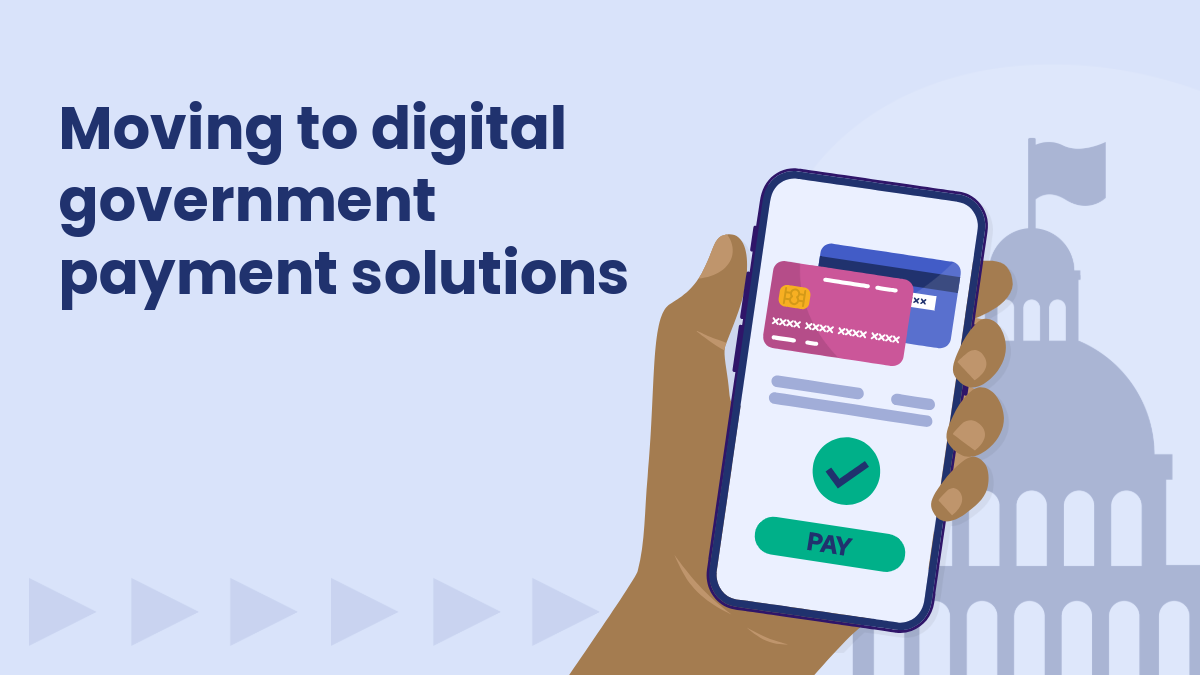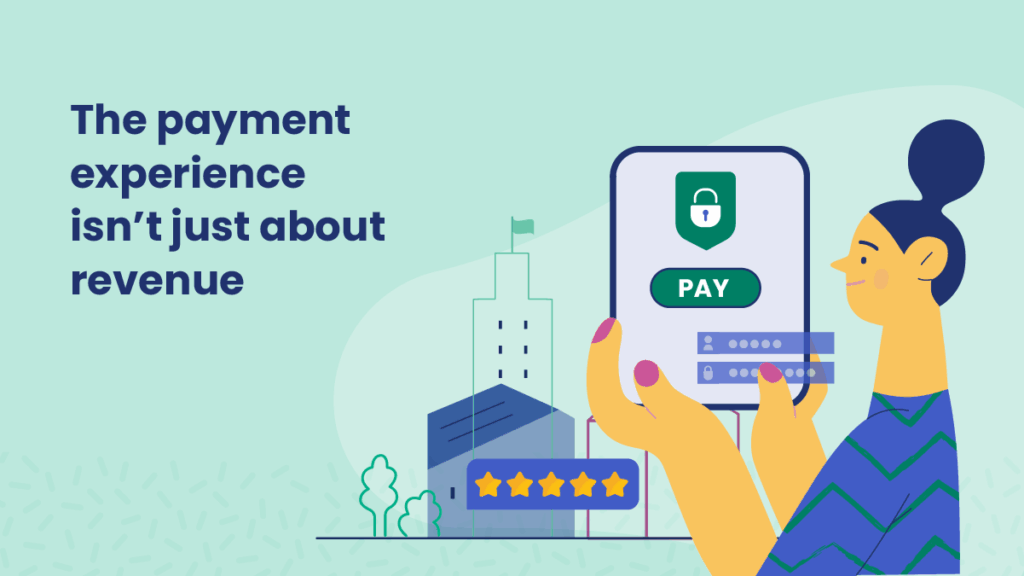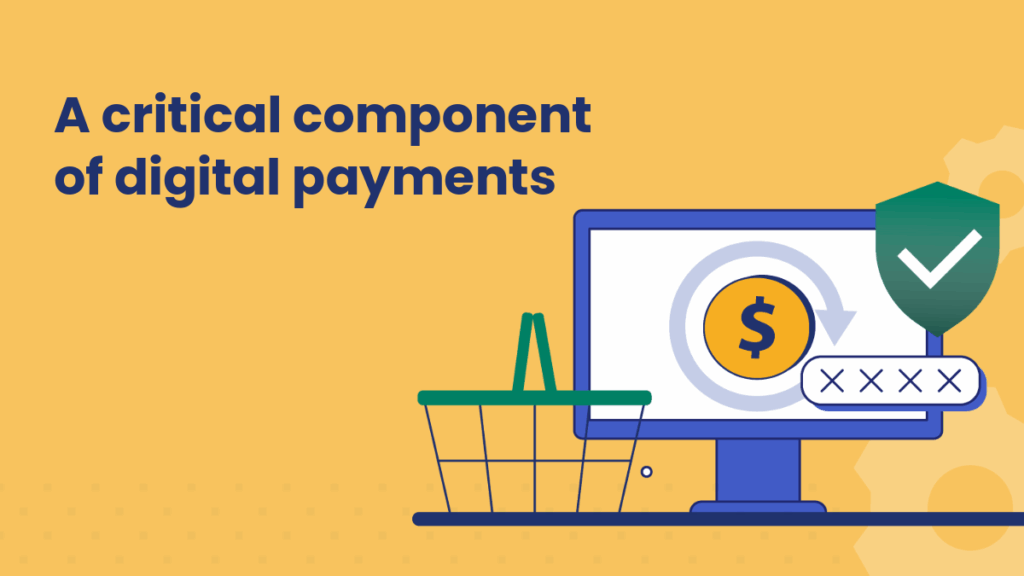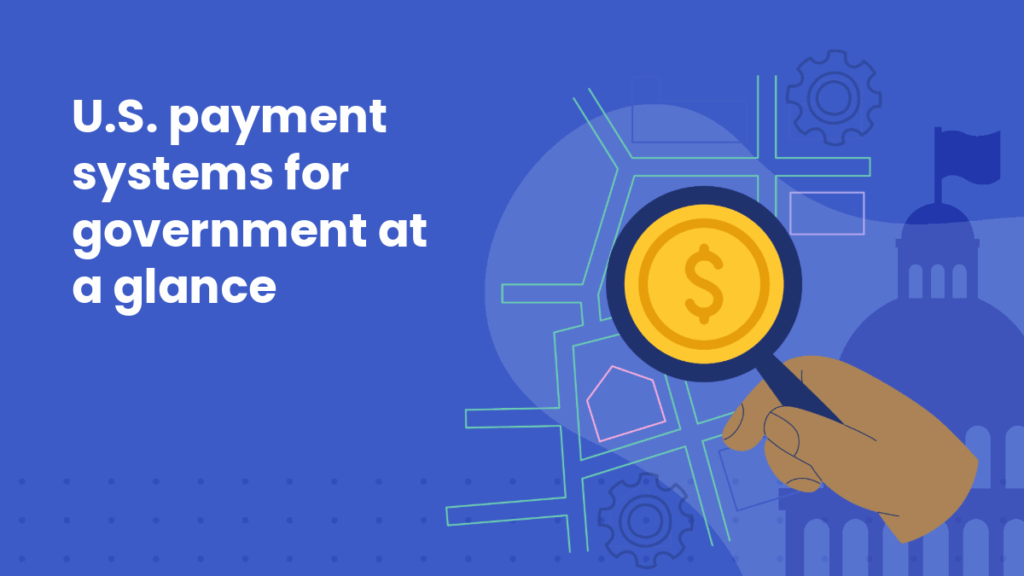Digital transformation in government payment processing

In most industries, the adoption of digital payments has steadily increased. In the U.S., digital payments are the norm: 92% of consumers have used a website, app, or digital wallet to make a payment in the past year. And the majority of people (73%) said they’re paying for government services online, too.
Yet, many government payment solutions still rely on outdated, clunky payment systems with confusing navigation, glitches, or unclear security measures that can give consumers pause — and slow internal processes.
Digital transformation in government: Why payment modernization matters
Public sector leaders recognize the inherent inefficiency and error-prone nature of manually compiling transaction data from multiple processors — often requiring staff to reconcile spreadsheets across different departments. This is a time-consuming task that modern payment technology can solve.
During times of uncertainty (when doing more with less becomes critical), digital transformation in government delivers important and measurable outcomes. Modernizing government payment processing allows agencies to collect revenue faster, reduce payment delinquency, and improve transparency in financial reporting. These benefits support operational efficiency, enhance audit readiness, and make compliance easier.
Government leaders have voiced these goals repeatedly over the past couple of years. In 2024, when we asked about the benefits of a modern payments solution, respondents highly ranked measurable business outcomes like faster revenue collection and cost savings via efficiency gains. For many leaders, faster revenue collection means reinvesting in services sooner, while efficiency gains allow staff to shift away from reconciliation tasks to work on higher-value projects for their community.
Modern government payment solutions consolidate fragmented portals, creating improved financial operations with faster and more accurate management. And online payments move money faster. When payments are slow to arrive or be processed (e.g., paper checks), financial management and customer experience suffer. But when more payments are digital, cash flow improves, reconciliation time decreases, and staff can close the books with greater confidence.
Fewer paper payments, more digital government payment processing
Both government agencies and customers are moving away from checks. From 2023 to 2025, there was a significant drop in check use and acceptance. In 2023, 88% of government agencies said they accepted checks, but only 20% of residents preferred to pay that way.
Government agencies responded accordingly: In 2025, less than half of agencies (42%) said they’ll be accepting checks in two years, and 36% plan to discontinue that offering. This shift mirrors broader consumer behavior, as more residents adopt mobile payments and digital wallets for everyday transactions.
Creating a payment ecosystem that works for everyone
At the same time, government leaders are expanding options for the underbanked. For example, many agencies now extend digitally enabled cash payments at retail locations, ensuring equitable access for households without traditional bank accounts.
Government payment processing shifts to digital
Phasing out paper checks will help redefine how government agencies handle finances and engage with residents. It also creates an opportunity for IT leaders to create systems that will shape the future of disbursements in the community they care about.
But modernizing government payment processing at this scale requires more than new technology. Along with system overhauls, agencies must also consider investments in infrastructure, cybersecurity protections, and user education. And digital transformation in government must ensure access for underbanked households and those without digital tools, reinforcing the principle of equitable service delivery.
Modern government payment solutions are not just about collecting revenue more efficiently. Digital transformation in government builds trust and improves accessibility. When residents can pay securely online, at a kiosk, or at a retail partner, it demonstrates that government can meet people where they are — with convenient, secure, and reliable payment options.
Looking for more content?
Get articles and insights from our monthly newsletter.




